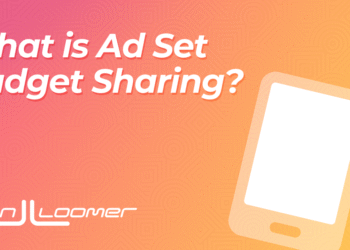Short-form video has officially gone long-term. In 2025, YouTube Shorts has carved out its own lane — not just as a TikTok alternative, but as a serious tool for reach, engagement, and monetization.
With new features, expanded length limits, and a whopping 200 billion views per day, Shorts is now essential for social media managers looking to grow a brand, test creative, or tap into what’s trending.
In this guide, we’ll break down how Shorts work, what’s new, and how to make them part of a smarter, more strategic YouTube marketing plan.
What is a YouTube Short?
YouTube Shorts are short, vertical videos (3 minutes or less) designed for quick, mobile-first viewing. You’ve likely seen them pop up in the Shorts feed, on the YouTube homepage, or while scrolling the YouTube app.
Think of Shorts like TikToks or Reels, but with the reach, searchability, and staying power of YouTube. They autoplay, loop, and load fast, making them perfect for grabbing attention in just a few seconds. That makes them ideal for quick product demos, DIY tutorials, behind-the-scenes peeks, or bite-sized podcasts.
And it’s not just hype, short-form video is winning everywhere:
Not to mention, with minimal production requirements and built-in discovery tools, Shorts make it easier than ever to connect with new audiences without committing to full-length YouTube videos.
How do YouTube Shorts work?
YouTube Shorts are designed to be easy to consume and even easier to find.
When viewers open the YouTube app, they can tap straight into the Shorts feed, a swipeable, vertical scroll of bite-sized content, tailored by YouTube’s algorithm to their interests.
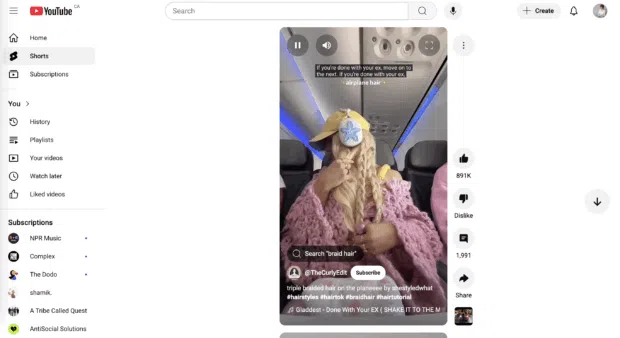
Here are a few YouTube Shorts features:
- Discovery-first: Shorts can appear in the Shorts feed, in YouTube search, on your channel page, and even on the homepage.
- Autoplay & loop: Videos start playing as soon as they load, which encourages quick views and fast engagement.
- Swipe-to-next: If a viewer isn’t hooked within a few seconds, they’re already watching someone else’s Short. First impressions count.
Shorts rely heavily on YouTube’s recommendation system. That means engagement metrics (likes, comments, shares, rewatches) matter a lot. But unlike regular YouTube videos, subscribers aren’t necessary for reach.
A single well-performing Short can rack up thousands (or millions) of views, even on a brand-new YouTube channel.
How long can a YouTube Short be?
As of October 2024, YouTube Shorts can be up to 3 minutes long — a major update from the previous 60-second limit. This change gives Shorts creators more space to tell richer stories, explore ideas more deeply, and experiment with longer formats that still live in the Shorts feed.
Here’s what you need to know about YouTube Shorts timing:
- Up to 3 minutes: The new maximum length for Shorts, available for all vertical or square videos uploaded after October 2024.
- Up to 60 seconds: Still widely used, especially for snappy how-tos, trends, and short-form storytelling.
Heads-up: If your Short runs over one minute, you won’t be able to add music using the audio picker. That’s because copyrighted audio isn’t allowed on Shorts longer than 60 seconds, and YouTube will block content that doesn’t follow the rules.
Pro tip: YouTube will automatically categorize any YouTube content that’s 3 minutes or less as a Short, as long as it’s in a vertical or square aspect ratio. Use a 16:9 aspect ratio if you don’t want your video classified as a Short.
YouTube Shorts sizes and specs
Before you hit upload, here are the technical requirements for creating YouTube Shorts that meet platform standards and look great on any screen.
- Length: Up to 3 minutes total
- Orientation: Vertical only
- Aspect ratio: 9:16 (standard for mobile viewing)
- Resolution: 1920 x 1080 pixels recommended
- Minimum resolution: 600 x 1067 pixels
- File size: Up to 2GB
- File formats supported: .MP4 and .MOV
- Captions: Optional, but recommended for engagement and accessibility
- Thumbnails: Not required (YouTube auto-generates one), but can be uploaded on desktop
- Audio: You can use your own original audio, or pull from YouTube’s music library
PSA: YouTube’s built-in Shorts camera has all of these specs pre-set, so recording directly in the YouTube app is the easiest way to get it right.
Types of YouTube Shorts
There’s no single formula for a successful Short. From repurposed long-form content to spontaneous mobile uploads, Shorts come in all styles. Below are the most common types, along with tips for when and how to use each format.
Original videos
These are Shorts created from scratch using your own footage, often filmed directly in the YouTube app using the Shorts camera. They’re ideal for quick tips, behind-the-scenes moments, product teases, and brand storytelling.
Use cases:
- Product demos or launches
- DIY tutorials or how-tos
- Bite-sized vlogs
- Event recaps
- Trend participation
FYI: Original Shorts tend to perform best when they capture attention in the first 2–3 seconds. Strong hooks and clear framing help viewers stick around.
Remixed from long-form videos
YouTube allows creators to clip and repurpose content from their existing videos using the Remix feature. This is a quick way to bring your library into the Shorts feed without starting from zero.
Use cases:
- Pull highlights from interviews or podcasts
- Repackage tips or insights from longer tutorials
- Create trailers or teaser clips for full-length videos
Pro tip: Not all videos are eligible for remixing. Content must be public and not restricted by privacy or copyright settings.
Duets and replies
These are Shorts made by responding to or building on existing videos. Think of them like TikTok’s stitch or duet features. You can react to a video, add context, or join a trend.
Use cases:
- Responding to comments with video replies
- Sharing your take on a trending topic
- Collaborating with another creator
- Adding expert commentary or context
Green screen and templates
YouTube’s built-in tools let you turn other videos into backgrounds or use remixable templates. These are great for memes, reactions, or rapid participation in trends.
Use cases:
- Humorous takes using trending audio
- Commentary over branded or stock footage
- Quick edits using the “Use this template” feature in the Shorts camera
Pro tip: YouTube is also rolling out updates to Dream Screen and Veo-powered AI tools, which will allow creators to generate custom video backgrounds — ideal for stylized or surreal formats.
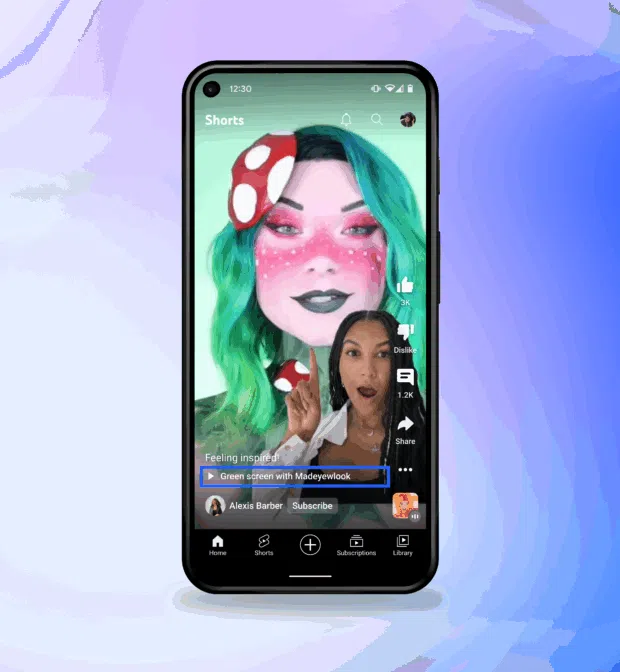
Source: Google Support
YouTube Shorts vs TikTok vs Reels
Choosing the right platform for your short-form video content depends on your goals, audience, and creative workflow. Here’s how the big three compare:
| Feature | YouTube Shorts | TikTok | Instagram Reels |
|---|---|---|---|
| Max Length | 3 minutes | 10 minutes | 20 minutes |
| Aspect Ratio | 9:16 (vertical) | 9:16 (vertical) | 9:16 (vertical) |
| In-App Editing | Basic tools (trim, speed, filters, green screen) | Robust tools (effects, transitions, templates) | Strong tools (filters, templates, AR effects) |
| Music Integration | YouTube audio library (limited for longer clips) | Massive licensed library | Meta Sound Collection |
| Discovery Feed | Shorts tab, homepage, channel page | For You Page (FYP) | Reels tab, Explore, feed, Stories |
| Monetization Options | Ad revenue, Super Thanks, Shopping, BrandConnect | Creator Fund, TikTok Pulse, Shopping, gifts | Bonuses (invite only), affiliate, Shopping |
| Remix / Duet Features | Remix, Green Screen, Templates | Stitch, Duet, Green Screen, CapCut integration | Remix, Templates, Green Screen |
| Scheduling | Yes (via YouTube Studio or Hootsuite) | Yes (via TikTok Business Center or Hootsuite) | Yes (via Meta Business Suite or Hootsuite) |
| Audience Demographic | Broad (esp. 18-45), strong on educational & search | Younger-skewing (Gen Z, Millennial) | Broad, lifestyle and visual-focused |
How to create a YouTube Short
Creating a Short in the YouTube app is quick, flexible, and doesn’t require any professional gear. All you need is your phone, a great idea, and a few minutes.
Step 1: Open the Shorts camera
Open the YouTube app, tap the “+” icon at the bottom of the screen.
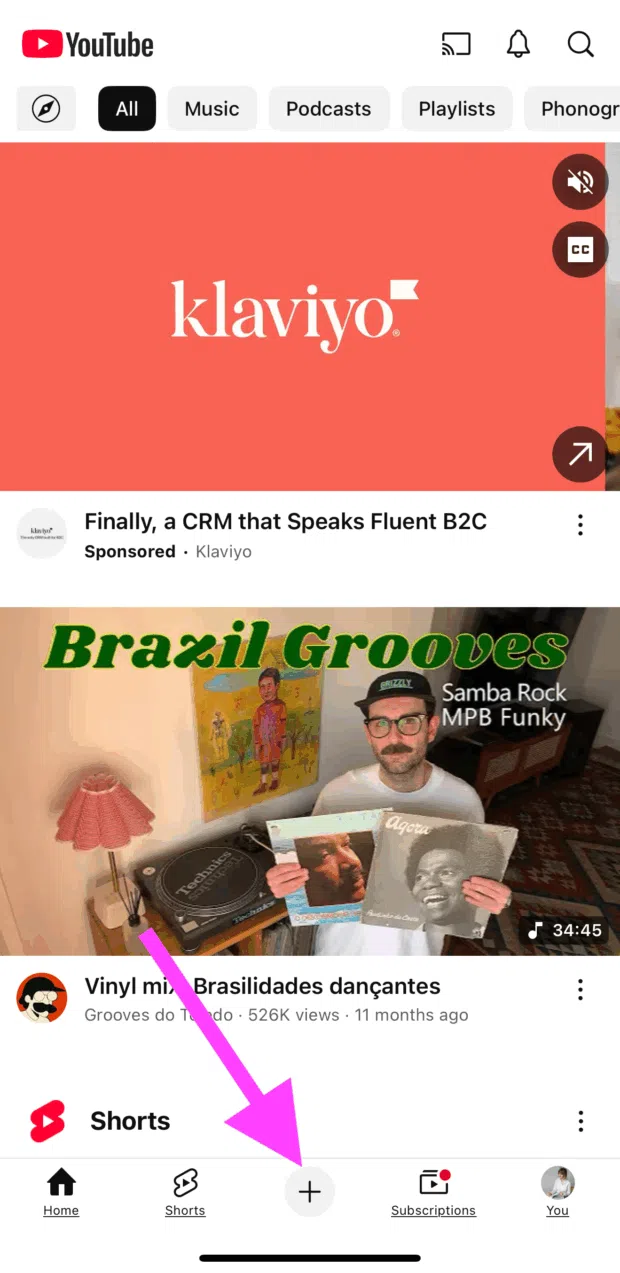
Your camera will automatically open, and you’ll be able to choose between Video, Short, Live, or Post. Choose Short.
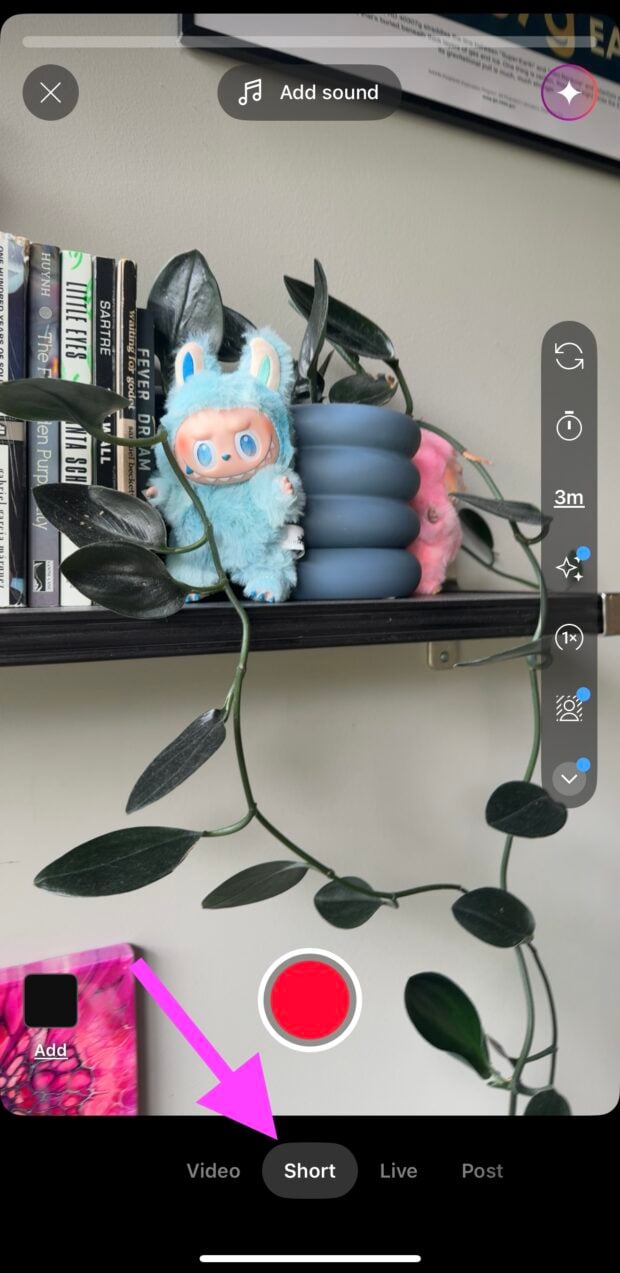
By default, you’ll be set to record a 15-second clip, but you can change that by tapping the duration icon in the menu to the right of the screen. Options include 15 seconds, 60 seconds, or 3 minutes.
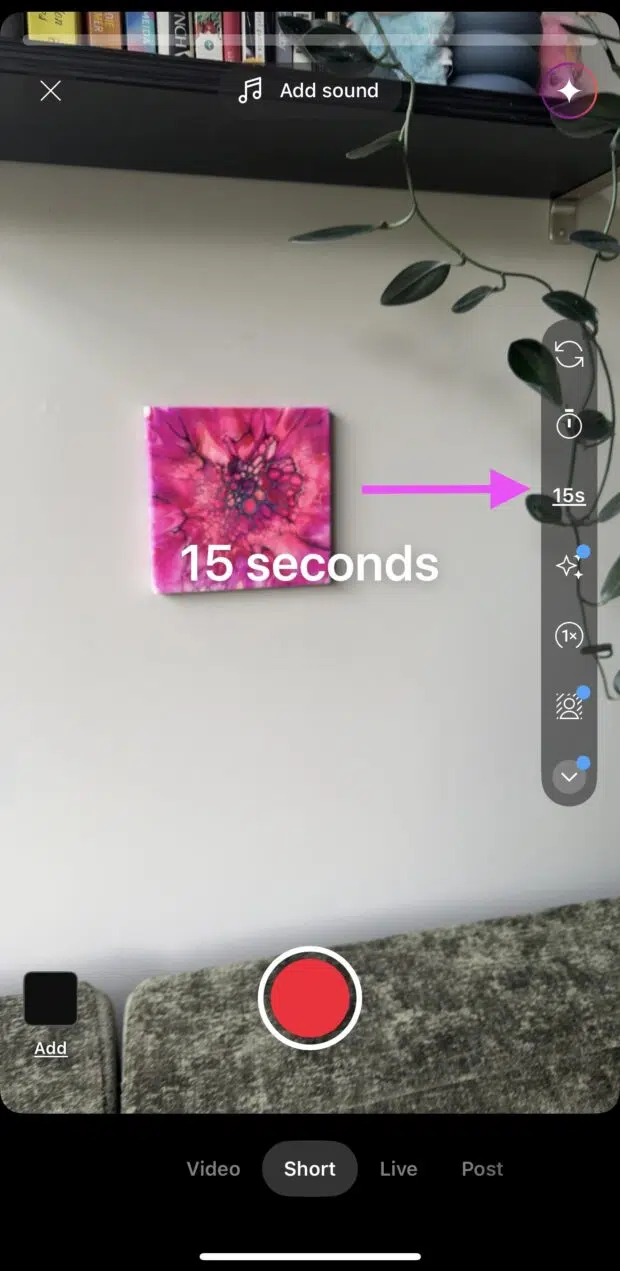
Hold or tap the red record button to start capturing video. You can film everything in one take or break your Short into segments.
A progress bar at the top will show how much time you’ve used and how many clips you’ve recorded.
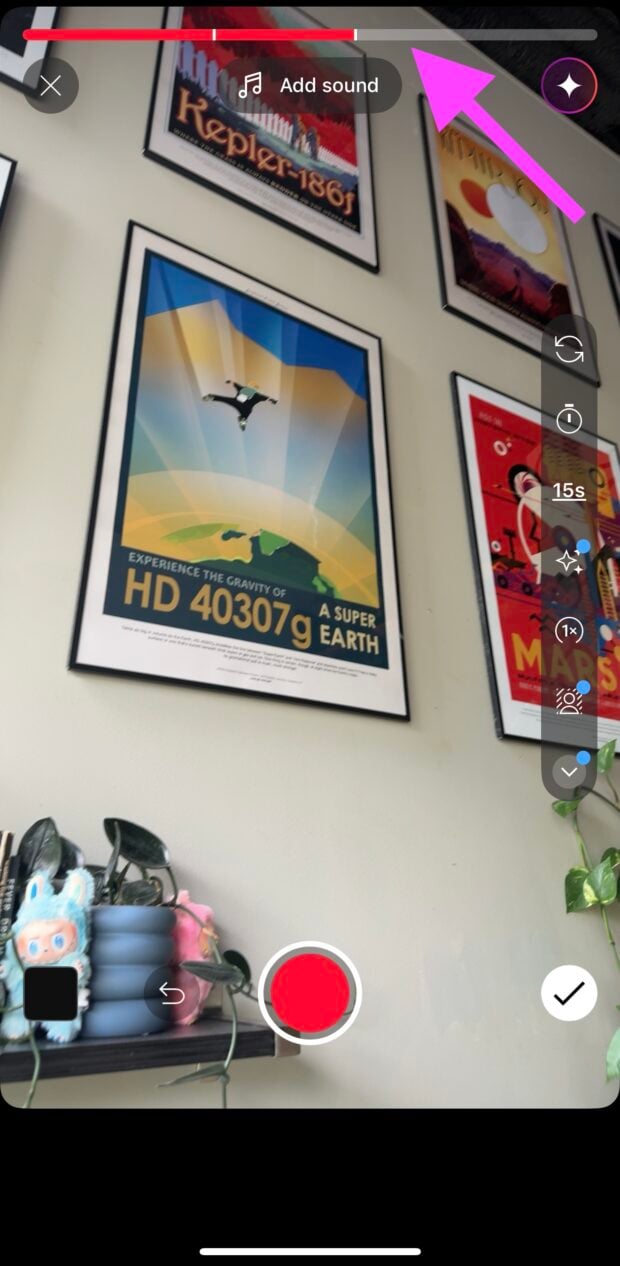
Step 2: Use built-in creative tools
Once you’re in the Shorts camera, you’ll see a set of tools along the right side. These let you flip the camera, change recording speed, set a countdown timer, apply filters, use green screen, and more.
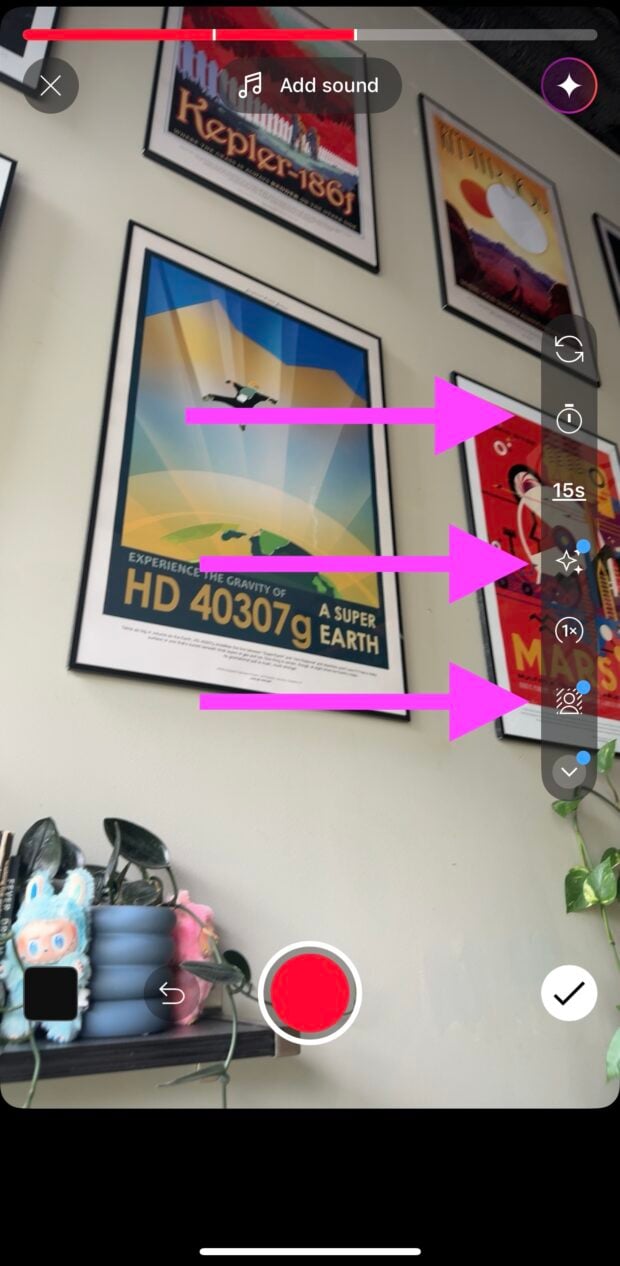
You can also add music before or after recording using the Add sound button at the top.
Just note: if your video is longer than one minute, you won’t be able to use the audio picker — YouTube blocks copyrighted music on Shorts over 60 seconds.
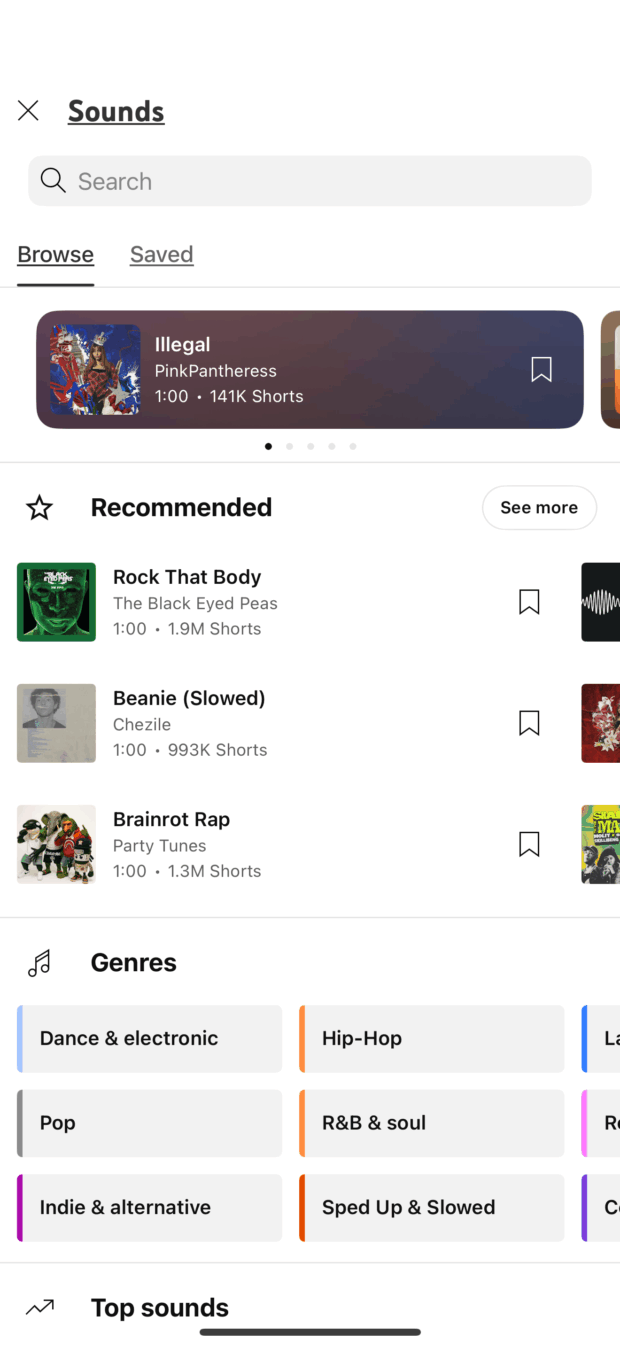
If you make a mistake, you can tap Undo to remove the last clip or Redo to add it back. You can also exit and save your Short as a draft if you’re not ready to publish.
Step 3: Edit and preview your Short
When you’re happy with what you’ve filmed, click the white check mark in the bottom right of your screen.
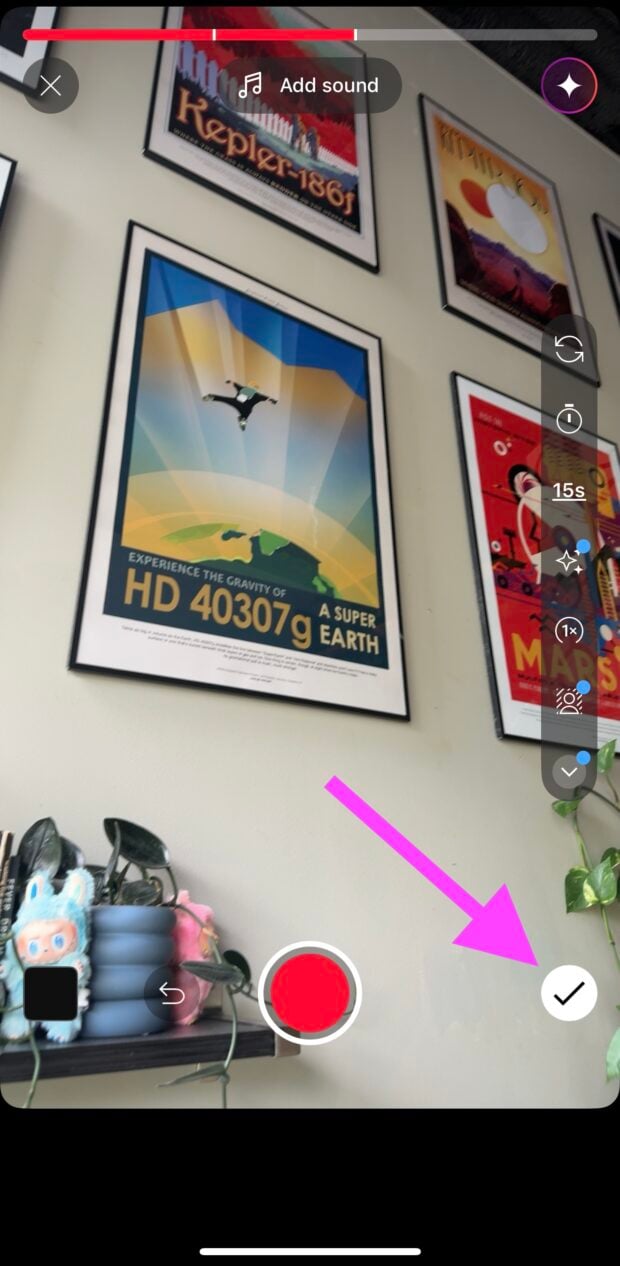
Here, you can trim your clips, add text, apply filters, and position elements on the timeline. Use the timeline icon to control when text or effects appear during playback.

This is also where you can revisit the sound picker (for Shorts under 60 seconds), overlay voiceovers, and adjust the overall pacing of your video.
Step 4: Add details and publish
Once you’re happy with your edit, tap Next to move to the upload screen. Give your Short a clear, engaging title — up to 100 characters — and choose your privacy setting (public, unlisted, or private).
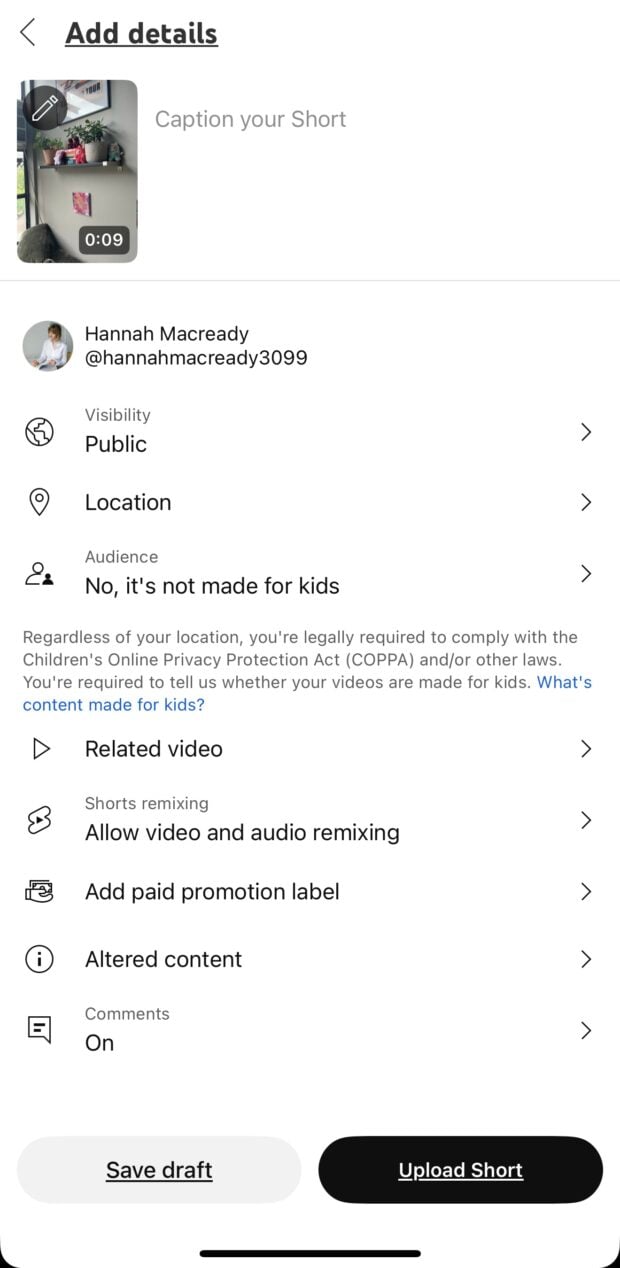
You’ll also need to set an audience designation: “Yes, it’s made for kids” or “No, it’s not.” If you’re under 18, your default privacy setting will be private, but you can change it manually.
When everything’s set, tap Upload Short to publish.
You can upload Shorts from your desktop if the video is vertical, under 3 minutes long, and saved as an .MP4 or .MOV file.
Optional: Save your Short as a draft
Not ready to post? You can save your Short as a draft and return to it later. Drafts are stored locally on your device — not your channel — so if you delete the app or switch phones, you’ll lose them.
To access your drafts, go to Create > Short, tap Next, then find Drafts in the lower-right corner of the screen.
Optional: Choose a thumbnail
Before or after uploading, you can select a frame from your video to use as the thumbnail. From the upload screen, tap the thumbnail preview, choose a frame, and optionally add text or filters.
Note: Thumbnail edits are final — you won’t be able to go back and adjust them later. Thumbnail selection is only available in the YouTube mobile app, not in Studio.
How to schedule YouTube Shorts with Hootsuite
Scheduling your Shorts in advance lets you stay consistent, avoid last-minute scrambles, and align your posting with your broader social media strategy.
With Hootsuite, you can upload, schedule, and publish Shorts directly to your YouTube channel and then promote them across other platforms from the same dashboard.
Note: To publish to YouTube via Hootsuite, you’ll need to connect your channel and have Editor, Advanced, or Unlimited permissions if you’re part of a Hootsuite organization.
Step 1: Prepare your video file
Before you upload, make sure your file meets YouTube’s requirements for Shorts:
- Length: Less than 3 minutes
- Aspect ratio: 9:16 (vertical)
- File type: MP4 or M4V
- Max file size: 1 GB
If your video meets those specs, YouTube will automatically classify it as a Short once it’s published.
Step 2: Connect your YouTube channel to Hootsuite
If you haven’t already, connect your YouTube channel in Hootsuite by going to Manage accounts, selecting Add a social network, and choosing YouTube. You’ll need to sign in with your Google account and grant the necessary permissions.
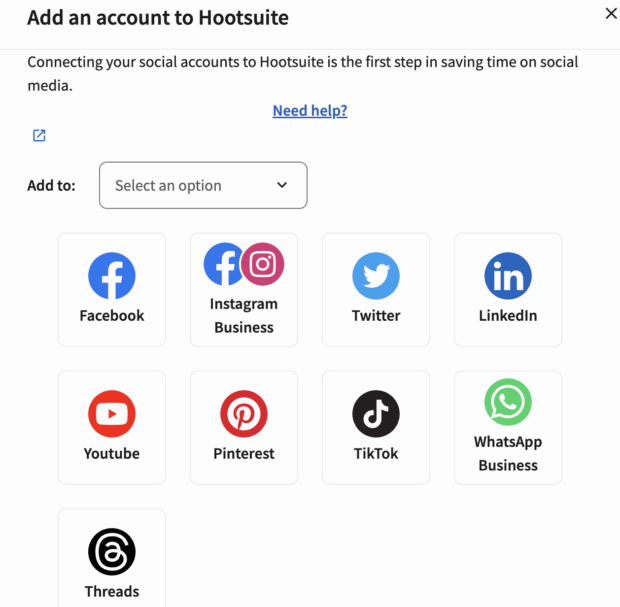
Pro tip: Verified YouTube accounts can upload longer videos and access additional customization options like thumbnail selection.
Step 3: Create and upload your Short in Hootsuite
Go to Create in the Hootsuite dashboard and select YouTube Video as your content type.
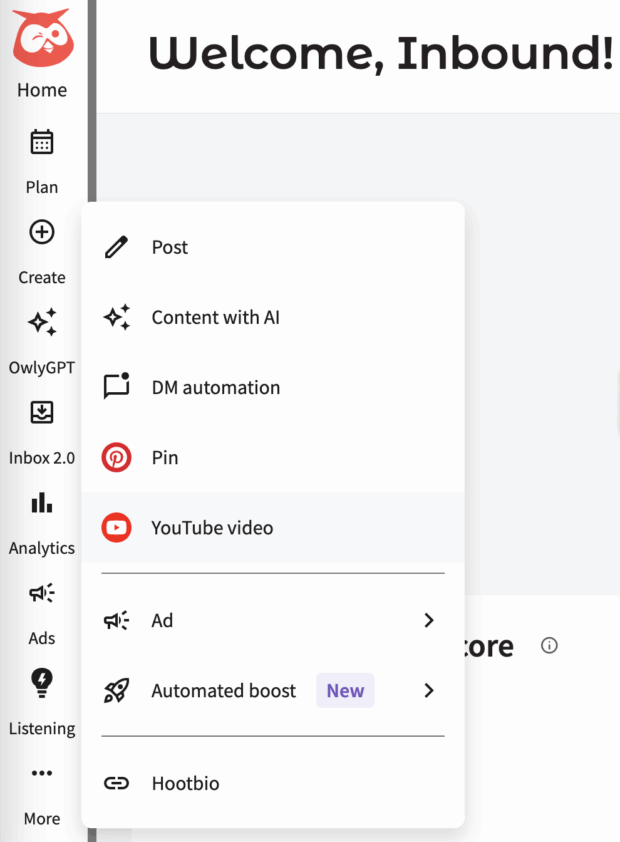
Drag and drop your video into the upload area, or click Choose a file to browse your computer.
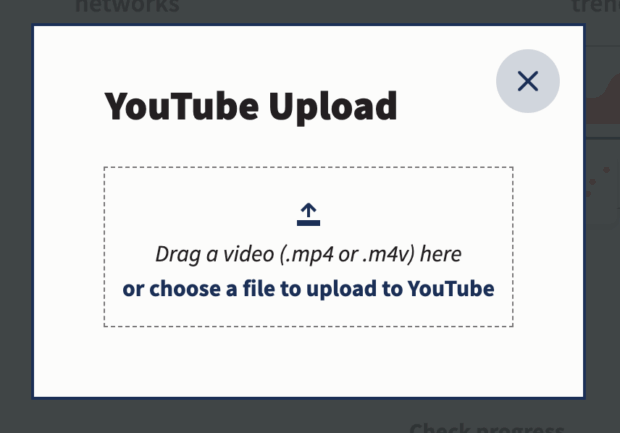
Then, choose the YouTube channel you want to publish to.
Pro tip: Hootsuite will recognize videos under 3 minutes in 9:16 format as Shorts and publish them accordingly.
Step 4: Add details and settings
Fill out the details for your Short:
- Title (required)
- Description (optional but helpful for SEO)
- Tags (optional; not visible publicly but improves discoverability)
- Category (e.g., How-to, Entertainment, etc.)
- Privacy setting: Choose from Public, Private, or Unlisted
If your YouTube account is verified, you can use the arrows to select a custom thumbnail from the uploaded video.
Step 5: Schedule your Short
To schedule your Short, toggle on Schedule to go public and select the date and time you want it to go live. This is especially useful if you’re planning around peak audience times or a larger campaign.

Once everything looks good, click Schedule (or Done if you’re publishing right away).
Pro tip: After your video is scheduled, you’ll receive a YouTube URL and embed code — perfect for sharing in newsletters, blogs, or other social platforms.
Step 6: Monitor and promote
Once your Short is scheduled, you can track it under My Videos in your Hootsuite streams.
You’ll see thumbnails for public and unlisted content, and if you’re logged into the same YouTube account, private videos will display as well.
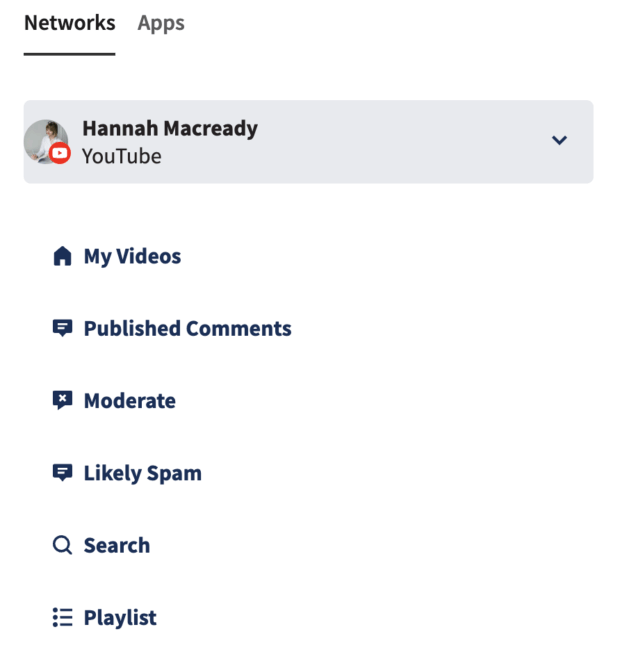
You can also:
- Click Share via Hootsuite to create a post for other channels using the video URL
- Use Hootsuite Analytics or Channelview Insights to monitor engagement across all your Shorts
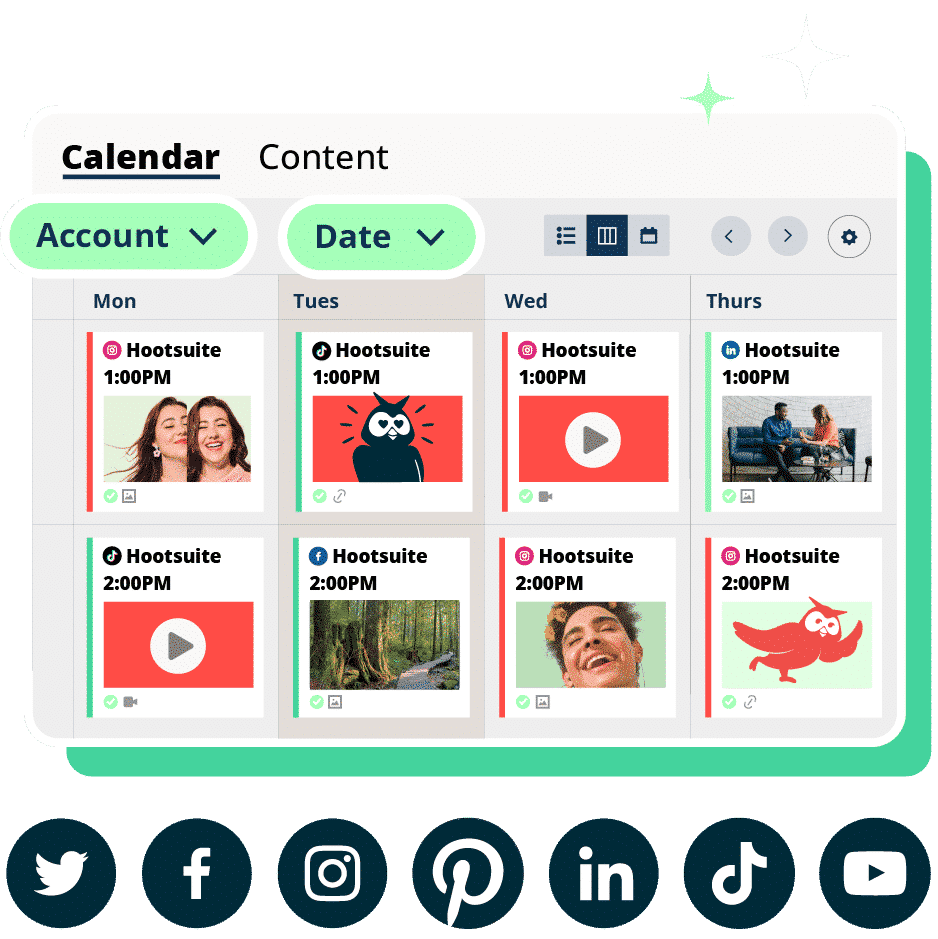
How to monetize YouTube Shorts
YouTube is the only short-form platform offering real ad revenue sharing, making Shorts a serious opportunity for creators and brands who want to grow their reach and earn income.
First, join the YouTube Partner Program
To start earning from Shorts, you’ll need to be part of the YouTube Partner Program (YPP) and accept the Shorts Monetization Module. Once you’re in, YouTube will start counting your eligible Shorts views toward ad revenue.
You can opt in anytime, but note that only views after you accept the terms are eligible for monetization.
How the revenue split actually works
Monetizing Shorts earns money from ads shown between videos in the Shorts feed. Here’s a simplified version of how YouTube divvies up that revenue:
- YouTube collects ad revenue across all eligible Shorts views
- That money goes into a Creator Pool
- If your Short includes music, YouTube splits the revenue to cover music licensing
- You’ll earn 45% of your share of the Creator Pool, regardless of whether music was used
The more engaged views you get, the bigger your slice of the pie.
Not all Shorts are eligible
To monetize, your content needs to follow YouTube’s advertiser-friendly guidelines.
That means:
- No reused or unedited content (like TV clips or someone else’s TikTok)
- No fake views or click farms
- No copyrighted music on Shorts longer than one minute
Shorts that don’t meet these criteria won’t be included in revenue sharing and may be blocked entirely.
YouTube Premium counts too
If someone watches your Short through a YouTube Premium subscription, you’ll earn a share of that revenue as well. It’s the same 45% cut, based on your share of Premium Shorts views in each country.
Where to track your earnings
Once you’re eligible, you’ll start seeing estimated Shorts Feed ad revenue in YouTube Analytics alongside your regular video metrics. Payments are handled through AdSense, just like with long-form content.
YouTube Shorts analytics (what to track and why)
Once your Shorts are live, your job isn’t done. Knowing how they perform — and why — is key to growing your reach and optimizing for the algorithm.
Views (but don’t stop there)
Views give you a baseline snapshot of how your Shorts are performing. But views alone won’t tell you if people actually like your content — or if the algorithm just gave it a brief test run.
Use views to identify initial reach. Then dig deeper.
Retention and replays
Watch time is everything. YouTube’s algorithm favors Shorts that get watched all the way through or replayed. Strong retention signals that your content is worth surfacing to more viewers.
If your retention graph drops off in the first few seconds, revisit your hook. The opening three seconds matter more than the last thirty.
Engagement: Likes, comments, shares
Engagement metrics help you understand how people are responding emotionally or socially to your content. More likes and comments typically mean more visibility in the Shorts feed.
Bonus: Comments are also great for generating content ideas and building community.
Traffic sources
Check where your views are coming from:
- Shorts feed
- YouTube search
- Suggested videos
- Channel homepage
- Playlists
- External embeds
If your Shorts are bringing in viewers from outside the feed, you’re building multi-surface reach — and that’s a big signal to YouTube.
Subscriber growth
A spike in subscribers from a specific Short means you’ve hit a nerve. Track which formats, topics, or tones correlate with the biggest bumps in your sub count, and replicate strategically.
Not every Short needs to drive subscriptions, but you’ll want to know which ones do.
Geography and device data
YouTube Shorts are mobile-first by design, but that doesn’t mean everyone watches them on their phone. Look at what percentage of your audience is on mobile, desktop, or TV.
Also, check where your viewers are based. Geographic insights can inform your post timing, language, and even cultural references.
5 YouTube Shorts tips from experts
We love a good success story, and Calleigh McLaughlin has one. As Social Media Manager at Abacus Brands Inc., she’s made YouTube Shorts the center of her content strategy. Her team posts everywhere, but Shorts is where they’re seeing serious traction.
We asked McLaughlin to spill her best YouTube tips, lessons learned, and the not-so-obvious tactics that are moving the needle right now.
1. Format is everything — once you find it, stick with it
“We keep 95% of our Shorts under 15 seconds,” McLaughlin says. “Shorter lengths have consistently performed best for us.” But what matters even more than brevity is structure.
Her team tests rigorously, then locks in repeatable formats.
That doesn’t mean making the same video every time. Instead, “once you’ve tested and found a format that works, double down,” she says. “Don’t reinvent the wheel — just test variations with different narratives or tweaks.”
Pro tip: Want to find your format? Start by spending time in the Shorts feed, not just watching trends, but actively analyzing your niche. “What are your competitors doing? What are they not doing?” McLaughlin asks.
2. Create with the loop in mind
Retention matters more than ever. That’s why McLaughlin’s team edits their Shorts for repeat views, not just completion. “We design for the loop — using phrases or visuals that naturally lead the viewer to rewatch the video,” she says.
Their hit “Instant Ice” video is a perfect example. It didn’t just rack up 20 million views by accident — it was built for replays. “Every shot was planned with tight visuals and matching narration. The loop at the end drove replays.”
3. Your audience will write your next script, if you let them
When it comes to ideation, McLaughlin’s team doesn’t just brainstorm in a vacuum. “Mine your YouTube comments for content ideas,” she says.
Viewer questions and challenges fuel the next batch of Shorts. “Some of our best-performing follow-ups came directly from the comments.”
She also recommends prompting interaction directly in the video itself. “Ask viewers to vote, share ideas, or choose what comes next — especially in challenge or transformation videos.”
4. Don’t overthink the algorithm, but do design with it in mind
“We focus on fun, lighthearted storytelling with clear visuals and a light tone,” McLaughlin says. It’s not about chasing trends or optimizing thumbnails pixel by pixel. It’s about patterns.
“Study what’s working specifically on YouTube Shorts, not just on social in general.”
The team also posts when their audience is actually active, not based on generic benchmarks. And yes, their copy is SEO-aware: “No vague, baity titles. We make sure people know exactly what they’re getting.”
5. YouTube moves slower — don’t panic if your Short doesn’t blow up
Unlike TikTok or Reels, Shorts can take a couple of days to find their audience. “Our ice video didn’t pick up until three days after posting,” McLaughlin notes. That slow ramp-up doesn’t mean your content is underperforming — it just means Shorts works on a longer curve.
“The unglamorous truth behind Shorts’ success is consistency, commitment, and refining based on data,” she says. “There is no magic bullet.”
And finally, her most unscientific advice? “Have fun. If you create out of an authentic energy, this comes through in the video. Some of our top-performing videos came from playful, spontaneous content where we were just enjoying the process.”
YouTube Shorts FAQ
What are YouTube Shorts?
YouTube Shorts are vertical videos up to 3 minutes long, designed for quick, mobile-first viewing. Think TikToks or Reels — but with YouTube’s built-in searchability, subscriber base, and long-term content value. You’ll find Shorts on the YouTube homepage, in the Shorts feed, and sprinkled across the platform.
Are YouTube Shorts monetized?
Yes. As of 2023, creators can earn ad revenue from Shorts through the YouTube Partner Program. You’ll need to opt into the Shorts Monetization Module to start earning. Ad revenue is pooled from views in the Shorts feed and distributed among creators based on engaged watch time. You’ll keep 45% of your cut, whether or not you use music in your Short.
Note: Shorts with copyrighted music over 1 minute are not eligible for monetization. Stick to original audio or keep it under 60 seconds if using tracks from YouTube’s music library.
How do I upload a YouTube Short?
Open the YouTube app, tap the + icon, and select Create a Short. Record your video (or upload one under 3 minutes and in vertical format), add music, text, or effects, and tap Next to fill in your title and details. Hit Upload Short — and you’re live.
You can also upload Shorts via desktop, as long as your video meets the criteria: vertical orientation, under 3 minutes, and in an accepted file format (.MP4 or .MOV).
Why aren’t my Shorts getting views?
A few common culprits:
- The content isn’t holding attention. Watch retention is everything on Shorts.
- Titles or thumbnails aren’t clear. Be specific and searchable.
- You’re reposting from other platforms without optimizing for YouTube.
- You haven’t given it enough time. Shorts often take 24-72 hours to pick up traction in the feed.
Want a deeper dive? Check your retention and engagement data in YouTube Analytics to see where viewers are dropping off.
What’s the best time to post a Short?
There’s no one-size-fits-all time—but the key is posting when your audience is actually online. Check your channel analytics under “Audience” to see your viewers’ most active hours.
If you’re just getting started, test a few time slots. Many creators see strong results in the early afternoon (12-3 PM local time), especially on weekdays. But your audience’s habits may vary, so track performance and adjust accordingly.
Let Hootsuite make growing your YouTube channel easier. Get scheduling, promotion, and marketing tools all in one place for your entire team. Sign up free today.






